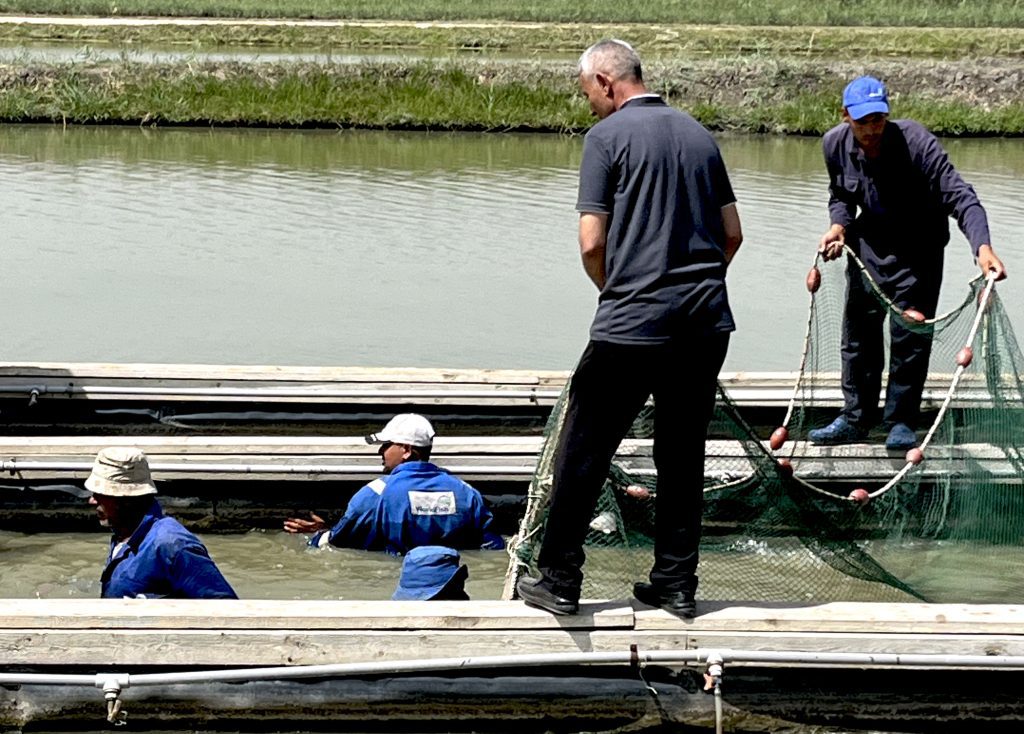Opportunities for U.S. Soybean Exports in Egypt

Indiana Soybean Alliance (ISA) farmer leaders and staff recently saw firsthand the ongoing efforts for U.S. soybeans in Egypt’s poultry and aquaculture industries.
The U.S. Soybean Export Council (USSEC) hosted a Qualified State Soybean Board (QSSB) Learning Mission in September in Cairo, Egypt. During a tour of one of the largest feed mills in the country, ISA CEO Courtney Kingery discussed some of the opportunities and challenges for the soybean industry.

“We learned that the largest market for U.S. soybean meal is poultry. The country has been having some economic issues with devaluation of the currency, so demand has dropped off but at the feed mill we heard the general manager say he expects it to increase in the coming months,” she says. “Aquaculture is the second largest usage with tilapia being the choice of most Egyptians. There are continued opportunities for U.S. soybeans in this region with growth in both markets.”
Farm-raised fish account for almost 80% of Egypt’s seafood market, up from 50% in 2012. Tilapia, catfish, sea bass, mullet and carp are all fish being produced through aquaculture production in Egypt. Per-acre fish production has increased from 400 kilograms to 2 tons since 2019.

According to USSEC, Egypt is the third largest soybean export market for the U.S., importing more than 4 million metric tons in 2022. The country’s poultry and aquaculture industries are leading the way for more soy to be crushed in the region.
Training and education boost soy demand
USSEC, with support of USDA’s Foreign Agricultural Service (FAS), launched the first global Soy Excellence Center (SEC) in September 2019 with several programs near Cairo. Today, more than 101 training programs have been conducted in Egypt. The trade mission coincided with the center’s fourth anniversary.

ISA Board Members Denise Scarborough of LaCrosse, Mike Koehne of Greensburg, and Joe Stoller of Bremen visited Cairo University to see the training program in action.
“There are various topics offered in the programs at the Soybean Excellence Center, but mainly they cover the difference between U.S. Soy and its competitors including the higher protein content and digestibility of U.S. soybean meal. They also focus on improving production and helping their business, which helps our business,” Stoller says. “…we toured Cairo University where the SEC training program is taught. We met with some of the faculty, sat in on a poultry course, and then handed out degrees at the graduation for the students.”
The are four Soybean Excellence Centers that have been established in emerging markets and they are Middle East and North Africa; South Asia and Southeast Asia; Sub Saharan Africa; and the Americas. The centers help meet local workforce needs by facilitating employee training and continuing education that builds the knowledge and skills to help employees overcome challenges in food and agribusiness operations.
The trade mission also involved a meeting with USDA Foreign Agriculture Service (FAS). Chris Riker, minister counselor for agricultural affairs at the U.S. Embassy Cairo, expanded on some of the challenges in Egypt.

“The biggest pressure on trade right now is the lack of available foreign currency in the market. There are just too many dollars that have left the market and so there’s a shortage of availability to make payments for making transactions,” Riker says. “From what my team has been hearing, it’s not that there’s a lack of interest in making the purchases but instead struggling with banks to come up with the currency to deliver payment based on the contractual terms.”
But, he says there is still a preference for U.S. soybeans in the country. That’s why it’s important for Indiana farmers and others on the trade mission to show that U.S. soybean growers are committed to being their supplier of choice.
Find out more information about growing markets for Indiana soybeans:




